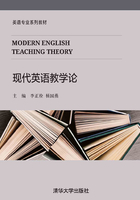
Basic Model of Experiential Learning
In Experiential Learning, immediate personal experience is the focal point for learning. As pointed out by Kolb (1984: 21), personal experience gives the “life, texture, and subjective personal meaning to abstract concepts”. At the same time it also provides “a concrete, publicly shared reference point for testing the implications and validity of ideas created during the learning process”. Experience along is not, however, a sufficient condition for learning. Experiences also need to be processed consciously by reflecting on them. Learning is thus a cyclic process integrating immediate experience, reflection, abstract conceptualization and action.
Kolb (1984: 42) advances a general theoretical model of Experiential Learning. According to the model, learning is essentially a process of resolution of conflicts between two dialectically opposed dimensions, the prehension dimension and the transformation dimension.
1. The prehension dimension refers to the way in which the individual grasps experience. The dimension includes two modes of knowing, ranging from what Kolb calls grasping via “apprehension” to what he calls grasping via “comprehension”.
Apprehension is instant, intuitive and tacit knowledge without a need for rational inquiry or analytical confirmation. The other end of the dimension, grasping via comprehension, on the other hand, emphasizes the role of conscious learning, whereby comprehension introduces order and predictability to the flow of unconscious sensations. Reality is thus grasped through varying degrees of emphasis on unconscious and conscious learning.
2. The transformation dimension refers to the transformation of experience through reflective observation and active experimentation. An individual with an active orientation is ready to take risks, attempting to maximize success and showing little concern for errors or failure. An individual with an excessive reflective orientation, on the other hand, may withdraw from risks in order to avoid failures, preferring to transform experiences through reflective observation.
The polar ends of the two dimensions thus yield four orientations to learning (Kolb, 1984):
1. Concrete experience, learning by intuition, with an involvement in personal experiences and an emphasis on feeling over thinking. This is an “artistic” orientation relying on sensitivity to feelings. The instructional activities that support this aspect of learning include discussions in small groups, simulation techniques, use of videos and films, and the use of examples, stories and autobiographies.
2. Abstract conceptualization, learning by thinking, using logic and a systematic approach to problem-solving. Emphasis is placed on thinking and manipulation of abstract symbols, with a tendency to neat and precise conceptual systems. The instructional techniques include theory construction, lecturing and building models and analogies.
3. Reflective observation, learning by perception, focusing on understanding the meaning of ideas and situations by careful observation. The learner is concerned with how things happen by attempting to see them from different perspectives and relying on one’s own thoughts, feelings and judgment. The instructional techniques include personal journals, reflective essays, observations, and thought questions and discussions.
4. Active experimentation, learning by action, with an emphasis on practical applications and getting things done. The learner attempts to influence people and change situations, taking risks in order to accomplish things. The instructional techniques include typically fieldwork, various projects, laboratory and home work, games, dramatizations and simulations, and the use of case studies.
Experiential Learning consists of a four-stage cycle combining all of these orientations. Thus simple everyday experience is not sufficient for learning. It must also be observed and analyzed consciously, and reflection must in turn be followed by testing new hypotheses in order to obtain further experience. I wish to argue, in fact, that theoretical concepts will become part of the individual’s frame of reference only after he or she has experienced them meaningfully at an emotional level. Reflection plays an important role in this process by providing a bridge between experience and theoretical conceptualization.

Figure 5.1 Model of Experiential Learning
From the teacher’s point of view, Experiential Learning means that opportunities are provided for the full development of the cycle. There are various instructional techniques to promote the different aspects of the learning cycle.
Kononen relates the four learning orientations to the historical developments in foreign language pedagogy. The Grammar-Translation Method was obviously strong on the abstract conceptualization of the linguistic system of the foreign language, at the expense of spoken fluency. This is because it focused on elaborate explanations of grammatical rules, memorizations of vocabulary, analyzing texts to consolidate grammar, and translating disconnected sentences for accuracy. The behaviorist approaches, such as the Audio-Lingual Method, were strong on concrete experience. They emphasized oral communication skills which were built up in a carefullygraded progression using a variety of pattern drill exercises. Grammar was taught inductively, avoiding theoretical explanations, and new vocabulary was introduced through demonstrations and visuals.
The communicative approaches, on the other hand, have shifted attention somewhat back on abstract conceptualization and emphasized active experimentation, the communicative use of language in meaningful situations. Affective factors are also taken more into consideration. In the intercultural learning approach, emphasis is being shifted even further towards reflecting on the personal, emotional and social factors. Whereas communicative competence related primarily to the individual’s knowledge and skills in communicative situations, intercultural competence also focuses on the learner’s personal and social abilities, such as ambiguity tolerance and respect for diversity. Intercultural learning thus aims at an integrated and more balanced view of the different learning orientations in Experiential Learning, emphasizing also the importance of reflective observation in language learning.
(Kononen et al., 2001: 27-30)